Table of Contents
The light bulb invention changed the world! It brought light to darkness and transformed how people lived and worked. While many think Thomas Edison invented the light bulb, its history is more complex.

The first practical incandescent light bulb was created by Thomas Edison in 1879, building on the work of earlier inventors. Edison’s design used a carbonized bamboo filament that could burn for 40 hours. This marked a huge leap forward in lighting technology.
The development of the incandescent bulb involved many scientists and inventors. Joseph Swan in England made important advances with carbon filaments. Edison improved on Swan’s work to create a longer-lasting bulb that could be mass-produced. Their efforts sparked a lighting revolution that continues to evolve today.
VIDEO ON THE $100000 LIGHT BULB
- The light bulb’s invention was a collaborative process involving multiple inventors over many years
- Thomas Edison created the first commercially successful incandescent bulb in 1879
- Light bulb technology has evolved from incandescent to more efficient options like LED
Who Invented Light Bulb?
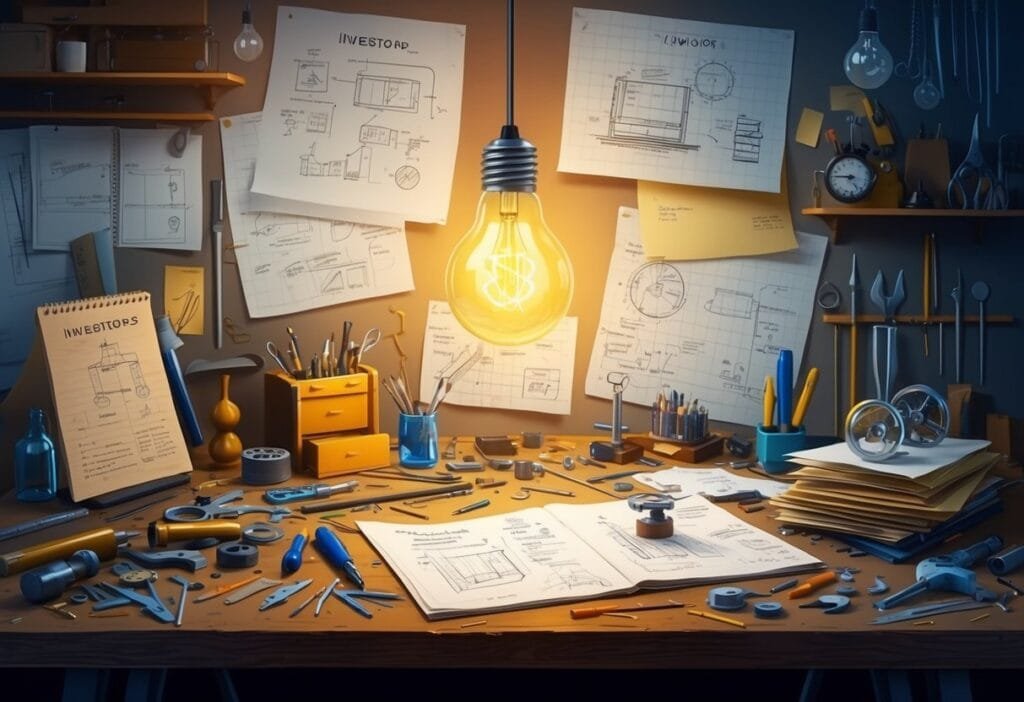
The light bulb’s creation was a group effort spanning decades. Many inventors worked on early versions before the modern bulb emerged.
Thomas Edison’s Contributions
Thomas Edison patented the first practical incandescent light bulb in 1879. His design used a carbonized bamboo filament in a glass bulb with a vacuum inside.
Edison tested thousands of materials to find the best filament. His bulb could burn for 40 hours straight.
Edison’s company began selling light bulbs in 1880. They improved the design over time, making bulbs that lasted longer and were cheaper to produce.
While Edison didn’t invent the very first light bulb, his version was the first to be practical and affordable for home use.
Joseph Swan and Others
Joseph Swan created a working light bulb in England around the same time as Edison. Swan’s bulb used a carbonized paper filament.
Swan and Edison later joined forces to sell bulbs in Britain.
Other key inventors include:
- Warren de la Rue: Made an early bulb with a platinum filament in 1840
- Ebenezer Kinnersley: Demonstrated electric light in 1761
These early attempts paved the way for later breakthroughs. The modern light bulb resulted from many people’s work over many years.
Light Bulb Invention & Development
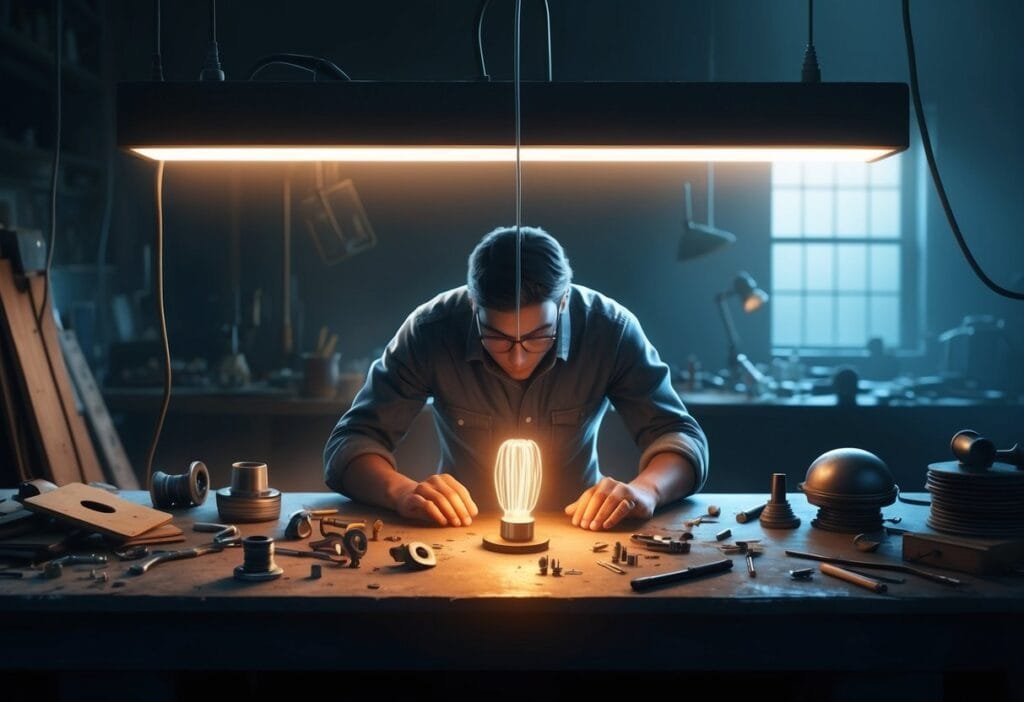
The creation of the incandescent light bulb involved several key breakthroughs over many decades. Scientists experimented with different materials and designs to produce a long-lasting, practical electric light.
Early Attempts
In 1838, Belgian inventor Marcellin Jobard created an incandescent light bulb using a carbon filament. His design used a vacuum to improve the filament’s lifespan. Other inventors also tried platinum filaments, but these proved too expensive for widespread use.
In 1835, James Bowman Lindsay demonstrated a constant electric light. For the next 40 years, scientists worldwide worked to improve electric lighting technology.
Breakthrough Innovations
A major advance came in 1877 with the invention of the Sprengel air pump. This device created better vacuums in glass bulbs. The improved vacuum prevented filaments from burning out quickly by reacting with outside gases.
Joseph Swan used this new pump to revisit his earlier designs. He tested various materials for filaments, seeking a longer-lasting bulb.
Carbon Filament Improvements
Thomas Edison and his team made significant progress with carbon filaments. They tested over 6,000 plant materials to find the best filament.
Edison’s first successful test in 1879 used a carbonized bamboo filament. This bulb burned for over 40 hours. Edison received a patent for his electric lamp in 1880.
These carbon-filament bulbs had low efficiency but quickly gained popularity. They replaced dangerous coal-gas jets, becoming common in cities by 1900.
The Technological Evolution of Light Bulbs
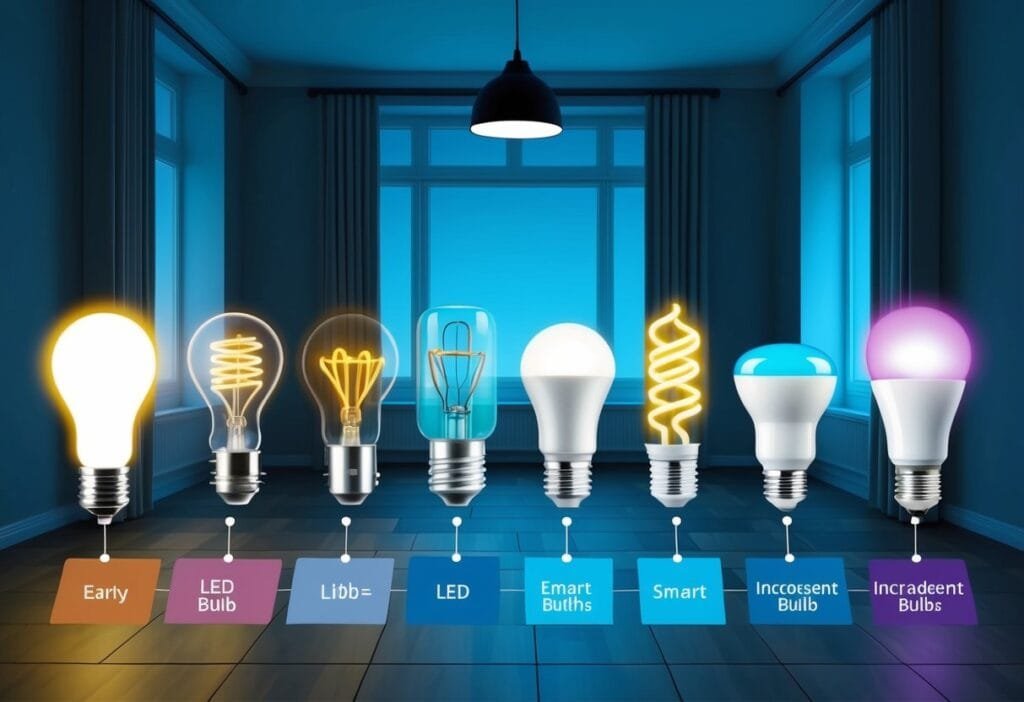
Light bulbs have changed a lot since they were first invented. These changes made them work better and last longer. New materials and methods helped create the light bulbs we use today.
From Vacuum to Gas-Filled Bulbs
The first light bulbs used a vacuum inside the glass bulb. This helped the filament last longer. But the vacuum had problems. It let the filament slowly break down.
To fix this, inventors tried something new. They put inert gases in the bulb instead of a vacuum. These gases, like argon or nitrogen, protected the filament.
Gas-filled bulbs had big benefits:
- They were brighter
- They used less energy
- They lasted longer
This change made light bulbs much better for everyday use.
Advancements in Filament Materials
Early electric lamps used carbon filaments. These worked, but they burned out fast. Inventors kept trying new materials to make better filaments.
Some key filament improvements:
- Tungsten: Lasts longer, brighter light
- Coiled filaments: More light in a smaller space
- Thoriated tungsten: Even longer life
These new filaments made bulbs last much longer. They also made the light brighter and clearer. Each new material was a big step forward in light bulb tech.
The Patent Wars and Commercialization
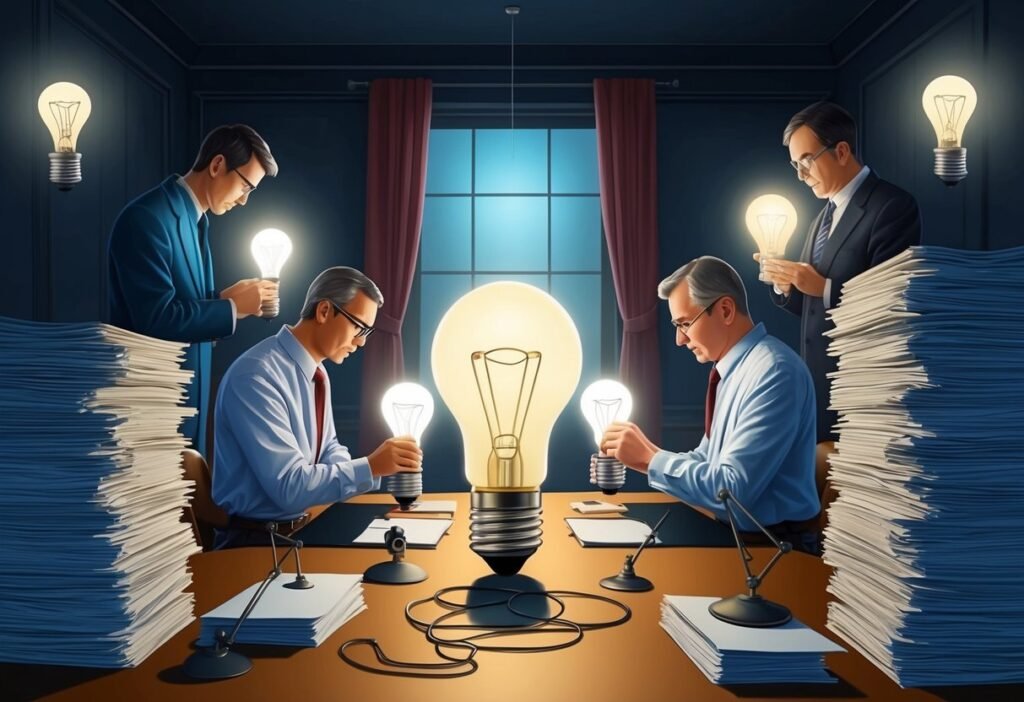
The race to patent and commercialize the light bulb sparked intense legal battles and led to the formation of new companies. Inventors and businesses fought to claim ownership of this revolutionary technology.
Legal Battles Over Inventions
Thomas Edison patented his light bulb design in 1880. This patent sparked fierce competition among inventors. Many challenged Edison‘s claims, arguing they had created similar devices.
The U.S. Patent Office invalidated Edison’s patent in 1883. They ruled it duplicated another American inventor’s work. This decision opened the door for more legal fights.
Joseph Swan, a British inventor, had his own light bulb patent. Edison and Swan eventually joined forces to avoid further disputes. They formed a joint company in Britain.
The Formation of Light Bulb Companies
Edison created the Edison Electric Light Company in 1878. This company funded his light bulb research and development efforts. It later became the famous General Electric Company.
Other inventors and entrepreneurs also started light bulb businesses. These companies competed to improve bulb designs and manufacturing processes.
The Electric Light Company was another major player. It brought together several patents and inventors to challenge Edison’s dominance.
As the industry grew, mergers and partnerships reshaped the competitive landscape. Companies fought for market share and technical advantages.
Light Output and Efficiency
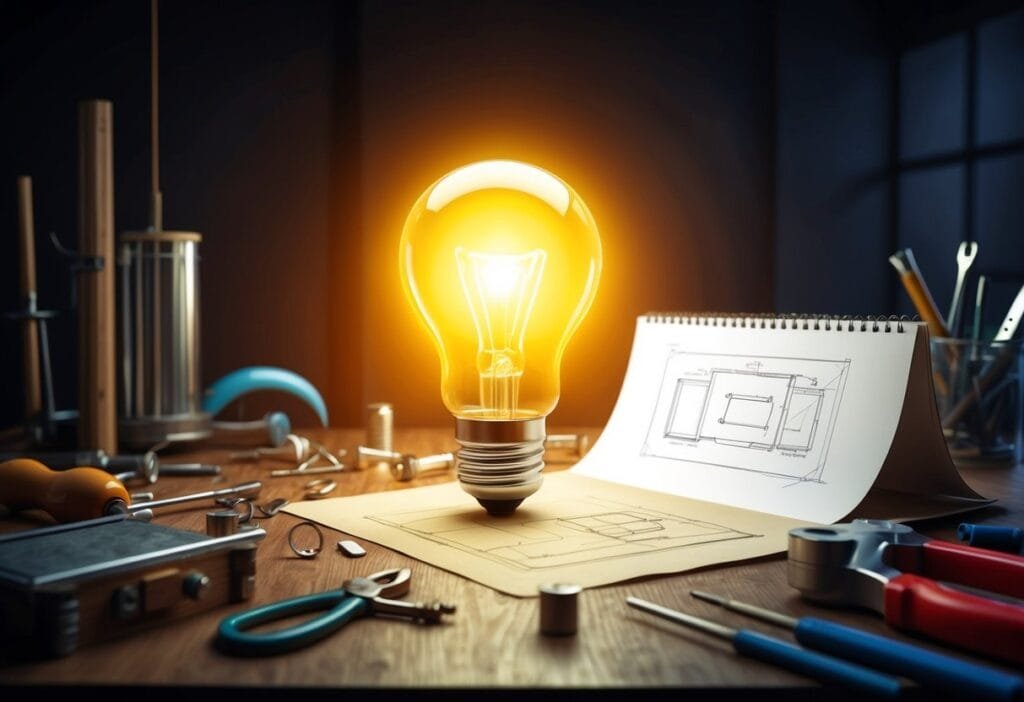
Early light bulbs had low brightness and short lifespans. Inventors worked to boost light output and reduce energy waste. These efforts led to brighter, longer-lasting bulbs that used less electricity.
Improving Brightness and Longevity
The first incandescent light bulbs produced dim light and burned out quickly. Inventors tested different filament materials to increase brightness. Carbonized bamboo filaments lasted longer than earlier versions.
Tungsten filaments, introduced in 1904, marked a big leap forward. They could reach higher temperatures, producing brighter white light. Tungsten also lasted much longer than previous materials.
Bulb makers found ways to prevent filaments from burning up. They removed oxygen from bulbs and filled them with inert gases. This slowed filament evaporation, extending bulb life to hundreds or thousands of hours.
Energy Consumption Concerns
Traditional incandescent bulbs waste a lot of energy. They convert less than 5% of electricity into visible light. The rest becomes heat.
This low efficiency raised concerns as electricity use grew. Researchers looked for ways to produce more light with less power. Some key innovations:
- Halogen bulbs: Use halogen gas to recycle evaporated tungsten
- Fluorescent lamps: Produce light through gas excitation, not heat
- LED bulbs: Generate light via semiconductors, using very little energy
These newer technologies produce much more light per watt of electricity. They also last far longer than traditional incandescents, reducing waste.
Modern Light Bulb Types
Light bulbs have come a long way since their invention. Today’s options offer improved efficiency and longevity compared to early designs.
From Incandescent to Fluorescent
Incandescent bulbs were the standard for many years. They produce light by heating a wire filament. While inexpensive, they waste energy as heat.
Fluorescent bulbs emerged as a more efficient alternative. They use mercury vapor to create ultraviolet light, which is then converted to visible light by a phosphor coating. Fluorescent tubes are common in offices and schools.
The first compact fluorescent light (CFL) was created in 1976 by bending a fluorescent tube into a spiral shape. CFLs fit into standard sockets and use about 75% less energy than incandescents. Early CFLs were expensive, costing $25-$35 each.
LED Innovations
LED (Light Emitting Diode) bulbs represent the latest lighting technology. They offer several advantages:
- Highly energy-efficient
- Long-lasting (up to 25,000 hours)
- Durable and shock-resistant
- No warm-up time needed
LEDs emit light in a specific direction, reducing the need for reflectors and diffusers. This makes them ideal for recessed lighting and task lamps.
Recent LED innovations include smart bulbs that can be controlled via smartphone apps. These allow users to adjust brightness, color, and even set schedules for automated lighting.
Environmental Impact and Future Trends
Light bulbs have changed over time. New types use less energy and last longer. Smart bulbs can be controlled by phones or voice.
The Shift to Eco-Friendly Options
Traditional incandescent electric light bulbs waste energy as heat. This led to a push for better options. LED and CFL bulbs now use much less power per bulb.
LED bulbs last up to 25 times longer than old bulbs. They also use about 75% less energy. This means lower electric bills and fewer bulbs in landfills.
Some places have banned old-style bulbs. The goal is to cut energy use and pollution. New bulbs often cost more up front. But they save money over time through lower energy use.
Smart Bulbs and Automation
Smart bulbs take saving energy further. They connect to Wi-Fi and can be controlled remotely. Users can turn them on or off with a phone app.
Many smart bulbs offer dim or brighter light settings. Some can change colors too. This lets people create different moods or use low light when needed.
Automation helps save even more energy. Bulbs can turn off when no one is in a room. They can also adjust based on the time of day or amount of sunlight.
As prices drop, more homes are using smart bulbs. This trend is likely to grow as people seek convenient, energy-efficient lighting options.
Cultural Significance of the Light Bulb
The light bulb became a powerful symbol in society. It changed how people think about progress and bright ideas. The invention shaped art, stories, and everyday life.
Symbolism in Literature and Media
In books and movies, light bulbs often mean new thoughts. When a cartoon character has an idea, a bulb lights up above their head. This image is so common that most people understand it right away.
Writers use light bulbs to show hope or knowledge. In dark stories, a single bulb can mean safety. Some authors describe the warm glow of a bulb to create a cozy mood.
TV shows and ads also use light bulbs. They might show a person turning on a light to solve a problem. This ties the bulb to smart choices and clear thinking.
Light Bulb in Popular Imagination
People see light bulbs as more than just tools. They stand for human progress and creativity. The phrase “light bulb moment” means a sudden good idea.
Thomas Edison’s invention made him a folk hero. Many view him as the perfect example of an inventor. This image inspires people to work on their own ideas.
Light bulbs appear on logos for tech companies and think tanks. They want to seem smart and innovative. Even as new lights replace old bulbs, the symbol stays strong.
In green energy talks, the light bulb is key. Changing to better bulbs became a way for people to help the planet. This gave the light bulb new meaning in recent years.

